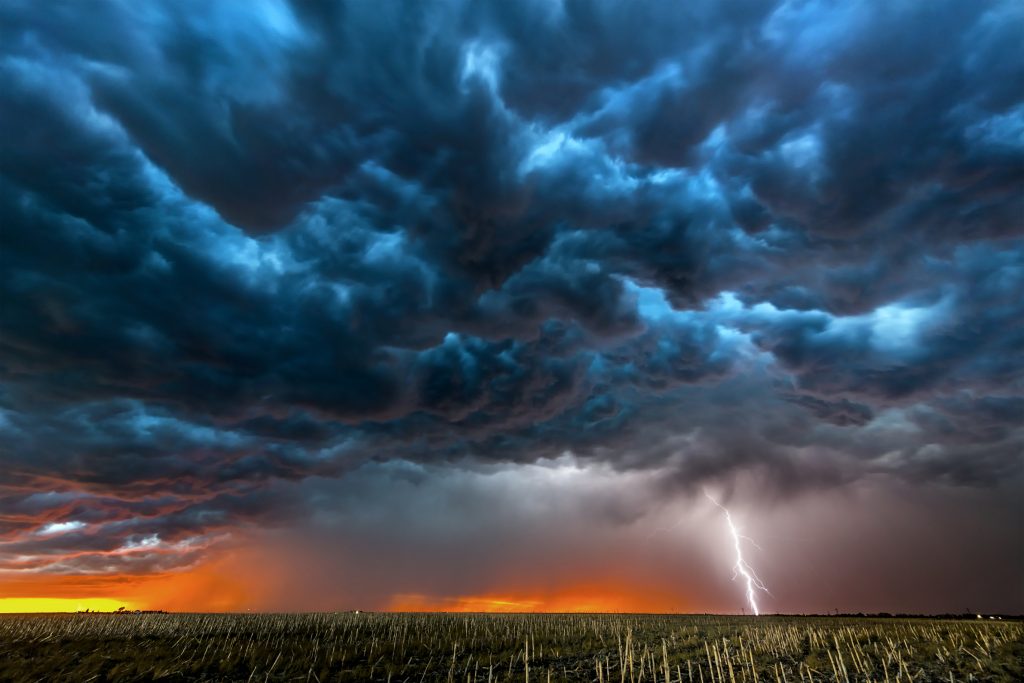Hailstorms can seem like nature’s way of throwing a curveball at us—literally. One minute it’s sunny, and the next, you’re dodging ice chunks from the sky. If you’ve lived in a place like Texas for any length of time, you know that hail is no small matter. In fact, it can be downright destructive. But have you ever wondered what makes hailstorms so intense and why places like Texas seem to be a magnet for them? Let’s dive into the science of hail, and I promise, I’ll make meteorology fun along the way.
What Is Hail and How Does It Form?
To put it simply, hail is frozen rain—but not just any frozen rain. These ice balls can be anything from the size of a pea to the size of a grapefruit, depending on the conditions inside the storm.
It all starts inside a thunderstorm. Imagine warm, moist air rising quickly into the atmosphere, carried by what meteorologists call “updrafts.” These updrafts are like nature’s elevators, lifting water droplets high into the cold upper layers of the atmosphere where they freeze into tiny ice particles. Now, here’s where it gets interesting: instead of falling right away, these tiny frozen droplets get caught in the storm’s updrafts and are sent up and down multiple times. Every time the droplet gets caught in the updraft and lifted again, it passes through more moisture, collecting layers of ice and growing larger.
Eventually, the hailstones become too heavy for the updrafts to carry, and they fall to the ground. Depending on the strength of the updrafts and the moisture in the storm, hailstones can vary widely in size. The stronger the updrafts, the bigger the hailstone. This is why some hailstorms produce only small, harmless pellets, while others rain down ice chunks that can seriously damage your car, roof, and windows.
Why Hailstorms Are So Destructive
If you’ve ever heard the sound of hail slamming against your windows, you know it’s not just the size of the hailstones that makes them destructive—it’s the impact. The speed and density of the hailstone are what really cause the damage. A golf-ball-sized hailstone can fall at speeds of up to 50 mph. Now imagine dozens of these stones pelting your vehicle. The result? Dents, cracked windshields, and significant damage.
Even smaller hailstones can cause problems. Hail doesn’t have to be massive to be destructive. Small stones that fall fast enough can create dents all over your car’s surface, leaving you with a vehicle that looks like it’s been through a battle. And the damage doesn’t stop at cars. Roofs, windows, crops—pretty much anything left exposed can bear the brunt of a hailstorm.
Why Texas is a Hail Magnet
So, why does Texas seem to get more than its fair share of hail? Well, it all comes down to geography. Texas sits in a region known as Hail Alley, which stretches from Texas through Oklahoma, Kansas, and into parts of Colorado. This area experiences more hailstorms than anywhere else in the United States, and the reason is pretty straightforward: it’s where warm, moist air from the Gulf of Mexico collides with cold, dry air from the Rocky Mountains.
This collision of air masses creates the perfect environment for thunderstorms—and as we’ve learned, thunderstorms are the birthplace of hail. During the spring and early summer months, Texas experiences frequent storms as these opposing air systems meet, which is why hail season typically peaks in May and June.
The thunderstorms in this region are often strong enough to create the updrafts needed to form large hailstones, meaning that Texas is regularly pelted with some of the biggest and most damaging hailstorms in the country.
How Hailstones Are Measured and Classified
Not all hailstones are created equal. In fact, the National Weather Service has a whole classification system to measure hailstones, comparing them to everyday objects. For example:
- Pea-sized hail: about ¼ inch in diameter
- Quarter-sized hail: about 1 inch in diameter
- Golf ball-sized hail: about 1¾ inches
- Softball-sized hail: 4 inches or more
To give you an idea of the destructive power of large hailstones, the largest recorded hailstone in the U.S. measured a whopping 8 inches in diameter—about the size of a volleyball—and weighed almost two pounds! That’s a block of ice falling from the sky at high speeds.
The larger the hailstone, the more energy it carries when it hits the ground, which is why even a few minutes of large hail can cause thousands of dollars in damage to vehicles, homes, and crops.
Why Hail Damage Is So Dangerous for Vehicles
Hail and cars just don’t mix. Your vehicle’s exterior might seem sturdy, but it’s surprisingly vulnerable to the impact of hail. Depending on the size of the hailstones, you could end up with anything from minor dings to shattered windshields. The worst part? Even small dents can have lasting consequences if they’re not repaired properly. Over time, untreated dents can lead to rust, which eats away at the body of your car, reducing its resale value and potentially causing long-term damage.
That’s where Paintless Dent Repair (PDR) comes in. PDR is an ideal solution for hail damage because it restores your car’s body without affecting the original paint. This means that your car maintains its value, and you avoid the need for more invasive (and expensive) bodywork later on. PDR is also a faster and more environmentally friendly solution, as it doesn’t involve harsh chemicals or fillers.
There’s something about understanding the science behind hailstorms that makes you appreciate just how powerful they are—and why protecting your vehicle from hail damage is so important. If you live in Texas, where hailstorms are a regular visitor, it’s crucial to stay prepared and take steps to safeguard your car. Whether that means parking in a garage or investing in hail protection covers, being proactive can save you a lot of time, stress, and money in the long run.
And if a storm does leave its mark on your vehicle? Well, that’s when you turn to the pros who can help restore it to its former glory. Hail might be inevitable, but long-lasting damage doesn’t have to be.



